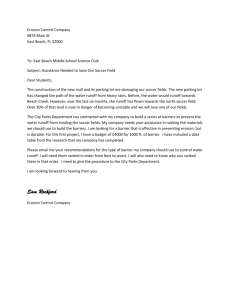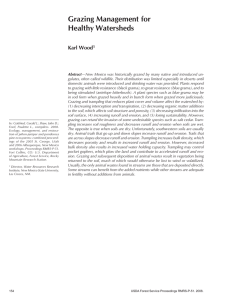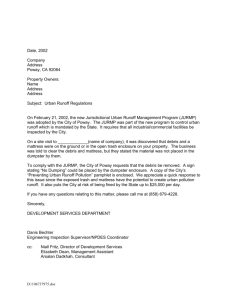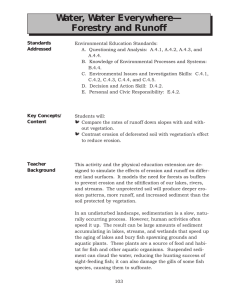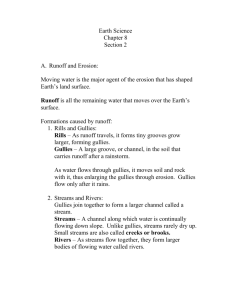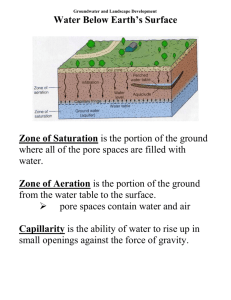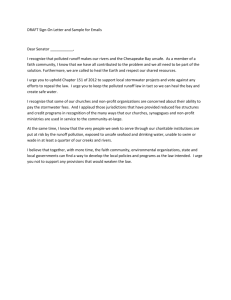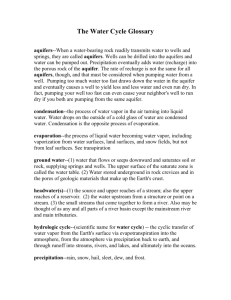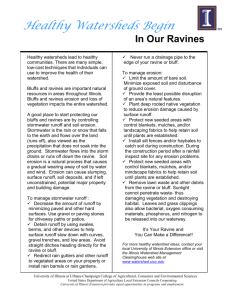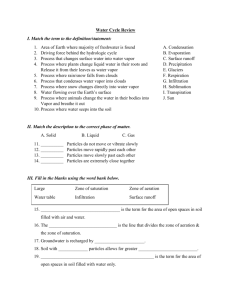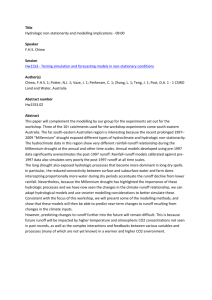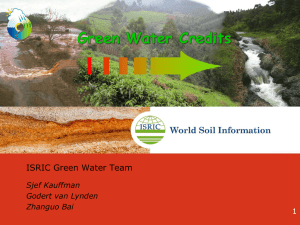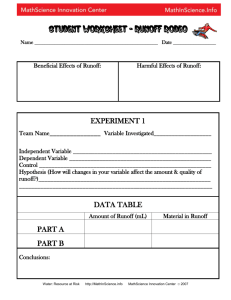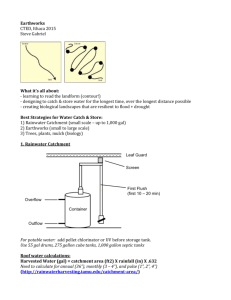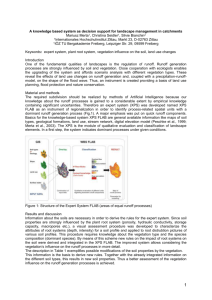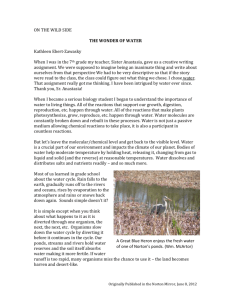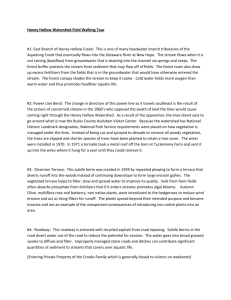Surface Erosion
advertisement
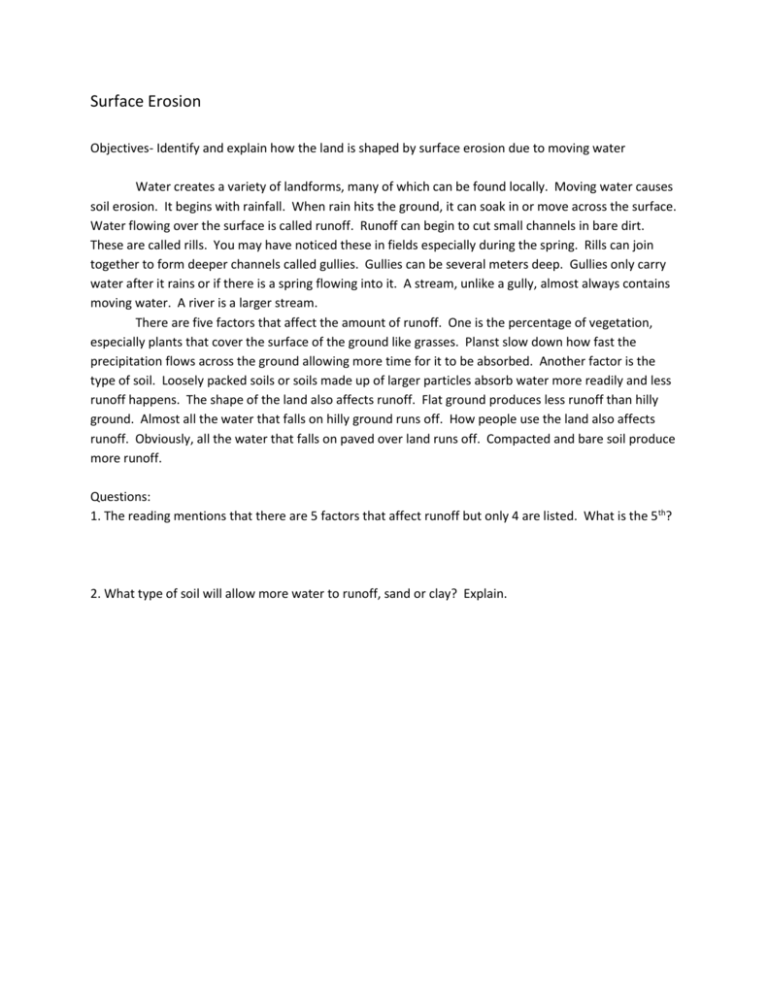
Surface Erosion Objectives- Identify and explain how the land is shaped by surface erosion due to moving water Water creates a variety of landforms, many of which can be found locally. Moving water causes soil erosion. It begins with rainfall. When rain hits the ground, it can soak in or move across the surface. Water flowing over the surface is called runoff. Runoff can begin to cut small channels in bare dirt. These are called rills. You may have noticed these in fields especially during the spring. Rills can join together to form deeper channels called gullies. Gullies can be several meters deep. Gullies only carry water after it rains or if there is a spring flowing into it. A stream, unlike a gully, almost always contains moving water. A river is a larger stream. There are five factors that affect the amount of runoff. One is the percentage of vegetation, especially plants that cover the surface of the ground like grasses. Planst slow down how fast the precipitation flows across the ground allowing more time for it to be absorbed. Another factor is the type of soil. Loosely packed soils or soils made up of larger particles absorb water more readily and less runoff happens. The shape of the land also affects runoff. Flat ground produces less runoff than hilly ground. Almost all the water that falls on hilly ground runs off. How people use the land also affects runoff. Obviously, all the water that falls on paved over land runs off. Compacted and bare soil produce more runoff. Questions: 1. The reading mentions that there are 5 factors that affect runoff but only 4 are listed. What is the 5th? 2. What type of soil will allow more water to runoff, sand or clay? Explain.


